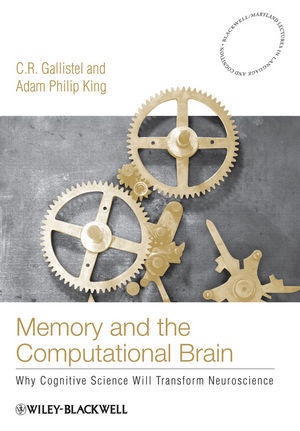Read more
Informationen zum Autor C. R. Gallistel is Co-Director of the Rutgers Center for Cognitive Science. He is one of the foremost psychologists working on the foundations of cognitive neuroscience. His publications include The Symbolic Foundations of Conditional Behavior (2002), and The Organization of Learning (1990). Adam Philip King is Assistant Professor of Mathematics at Fairfield University. Klappentext Memory and the Computational Brain offers a provocative argument that goes to the heart of neuroscience, proposing that the field can and should benefit from the recent advances of cognitive science and the development of information theory over the course of the last several decades.* A provocative argument that impacts across the fields of linguistics, cognitive science, and neuroscience, suggesting new perspectives on learning mechanisms in the brain* Proposes that the field of neuroscience can and should benefit from the recent advances of cognitive science and the development of information theory* Suggests that the architecture of the brain is structured precisely for learning and for memory, and integrates the concept of an addressable read/write memory mechanism into the foundations of neuroscience* Based on lectures in the prestigious Blackwell-Maryland Lectures in Language and Cognition, and now significantly reworked and expanded to make it ideal for students and faculty Zusammenfassung Memory and the Computational Brain offers a provocative argument that goes to the heart of neuroscience, proposing that the field can and should benefit from the recent advances of cognitive science and the development of information theory over the course of the last several decades. Inhaltsverzeichnis Preface viii 1 Information 1 Shannon's Theory of Communication 2 Measuring Information 7 Efficient Coding 16 Information and the Brain 20 Digital and Analog Signals 24 Appendix: The Information Content of Rare Versus Common 25 Events and Signals 2 Bayesian Updating 27 Bayes' Theorem and Our Intuitions about Evidence 30 Using Bayes' Rule 32 Summary 41 3 Functions 43 Functions of One Argument 43 Composition and Decomposition of Functions 46 Functions of More than One Argument 48 The Limits to Functional Decomposition 49 Functions Can Map to Multi-Part Outputs 49 Mapping to Multiple-Element Outputs Does Not Increase Expressive Power 50 Defining Particular Functions 51 Summary: Physical/Neurobiological Implications of Facts about Functions 53 4 Representations 55 Some Simple Examples 56 Notation 59 The Algebraic Representation of Geometry 64 5 Symbols 72 Physical Properties of Good Symbols 72 Symbol Taxonomy 79 Summary 82 6 Procedures 85 Algorithms 85 Procedures, Computation, and Symbols 87 Coding and Procedures 89 Two Senses of Knowing 100 A Geometric Example 101 7 Computation 104 Formalizing Procedures 105 The Turing Machine 107 Turing Machine for the Successor Function 110 Turing Machines for fis even 111 Turing Machines for f+ 115 Minimal Memory Structure 121 General Purpose Computer 122 Summary 124 8 Architectures 126 One-Dimensional Look-Up Tables (If-Then Implementation) 128 Adding State Memory: Finite-State Machines 131 Adding Register Memory 137 Summary 144 9 Data Structures 149 Finding Information in Memory 151 An Illustrative Example 160 Procedures and the Coding of Data Structures 165 The Structure of the Read-Only Biological Memory 167 10 Computing with Neurons 170 Transducers and Con...

